
In 1963, the journey along Route 66 was punctuated by neon signs: Shell, Mobil, Texaco, Standard… The rise of the motorcar had been insatiable since the ’20s, and with it, gas stations had become ubiquitous. Driving to his parents’ house in Oklahoma, pop artist Ed Ruscha photographed each stop along the way. The resulting book, Twentysix Gasoline Stations, elevated the prefabricated roadside structures into cultural icons. He wasn’t the only artist to see the art in gas stations: their distinctive canopies and petrol pumps also fascinated the century’s best architects, from Frank Lloyd Wright to Jean Prouvé.
It was a golden age that came and went, unacknowledged. Over the past three decades, more than 50,000 US gas stations have closed. In 2019, Boston Consulting Group predicted, depending on how rapidly the EV market took off, that between 45 and 80 per cent of the remainder could be unprofitable by 2035. In this midst of this potential mass extinction, however, a movement to protect the historic buildings is emerging. California’s Gilmore Gas Station gained Historic-Cultural Monument status in 1992. Arne Jacobsen’s white tiled station in Denmark is protected by a Class A listing. In 2017, the modernist Fiat Tagliero station in Eritrea became part of a Unesco World Heritage site. For each one saved, a new question presents itself: what to do with it?
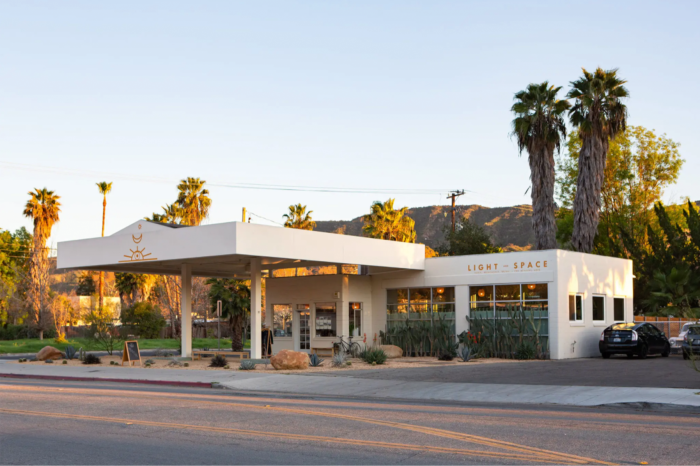
“At the beginning it was a bizarre decision to keep or transform a gas station,” says Éric Gauthier, senior partner at FABG Architectes, who was charged with converting Ludwig Mies van der Rohe’s Esso station on Montreal’s Nuns’ Island. “But Mies is important,” he says. Having previously turned Buckminster Fuller’s Expo 67 dome into the Montreal Biosphere museum, Gauthier was trusted to transform the site into a community centre. “I had to make choices about how far we would go to be faithful to the exact furnishings,” says Gauthier, “or to be faithful to the broader idea for a transparent, almost temple-like building, and try to do more Mies than Mies.”
He removed the gas station paraphernalia from the two rooms, creating spaces where teenagers and elderly people could organise dances, games and lectures. To avoid unsightly additions, he installed geothermal energy wells under the asphalt surroundings and built stainless-steel “gas pumps” outside, which are actually air intake and outtake fans. Gauthier took “some artistic liberties” with the lighting, extending the long fluorescent lights from the canopy into the indoor areas. “We wanted to simplify and go back to the abstract essence of the thing,” he says.
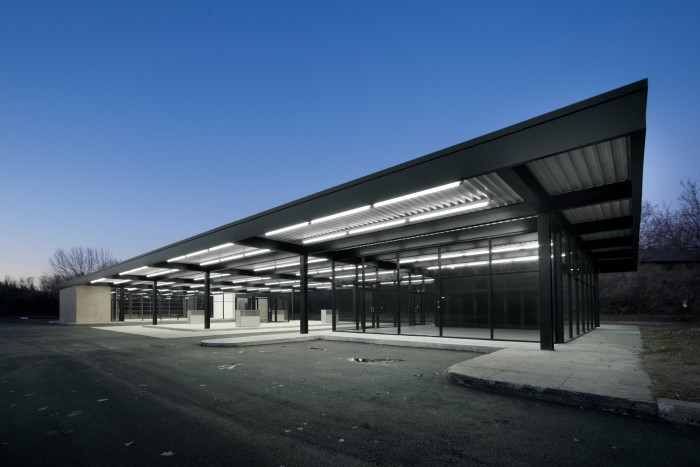
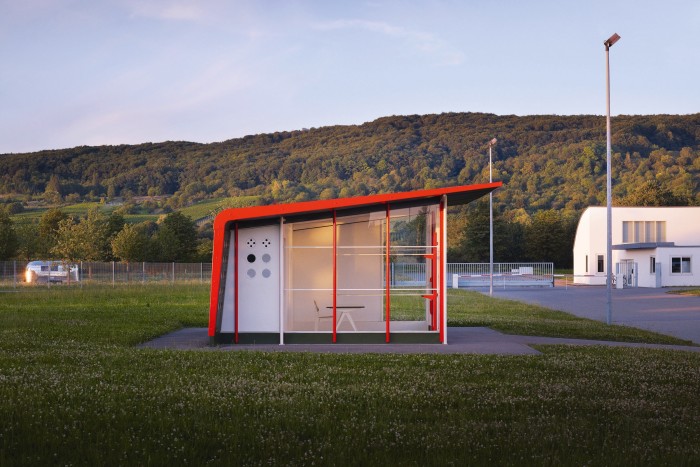
Early gas stations are a bit more kitsch than Mies’s sleek 1960s design. In the ’20s and ’30s, local authorities objected to the proliferation of makeshift gas shacks, and “would only permit a new gas station if it met certain aesthetic standards”, says Thomas Vanhaute, author of Gas Stations: An Illustrated History. This led to a plethora of revival-style gas stations, including the “English Cottage” style. Pure Oil cottages had blue tiled roofs, one of which now houses Peach Street Books in Virginia, while Phillips 66 went for an imitation Tudor look. Fewer than 100 of the Phillips 66 cottages remain, converted into everything from hair salons to a mortuary’s “storage” facility.
With the advent of modernism, designers wholeheartedly embraced movements from ’30s Streamline Moderne to Space Age Googie style, reminiscent of boomerangs and flying saucers. The “form follows function” axiom led to decidedly un-cottage-like structures: all pumps, plinths and canopies, supported by “mushroom” columns. The archetypal design is known as the “oblong box”, a low, enamel-clad building with a glass façade. In Hamburg, a station in this style is preserved as the Erfrischungsraum snack bar.
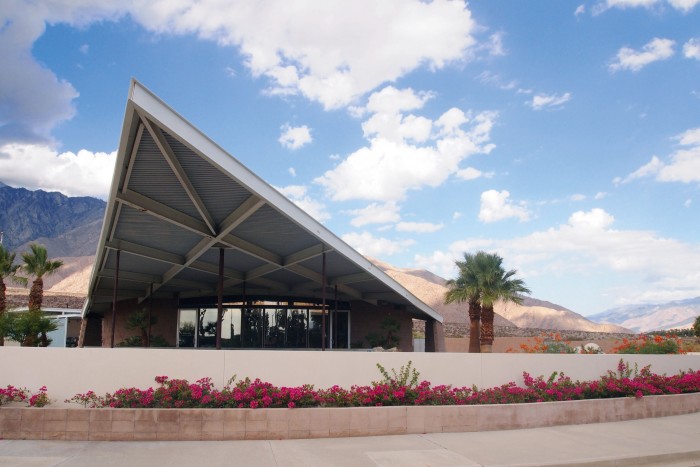
While these highly specific structures might not seem like prime candidates for adaptive reuse, many have been granted new life as Starbucks drive-throughs. The coffee chain’s conversion of California’s Gilmore Gas Station earned a Conservancy Preservation Award in 2018 for remaining “true to its auto-centric roots”. Starbucks has also revived the Flying Saucer station in Saint Louis, and the hyperbolic Markham Moor services in Nottinghamshire, England. A similarly dramatic station by desert modernist Albert Frey now houses the Palm Springs visitor centre, greeting tourists with a pointy paraboloid roof.
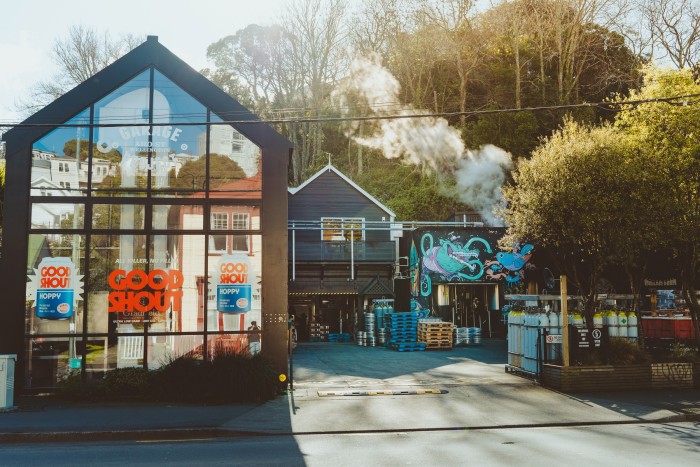
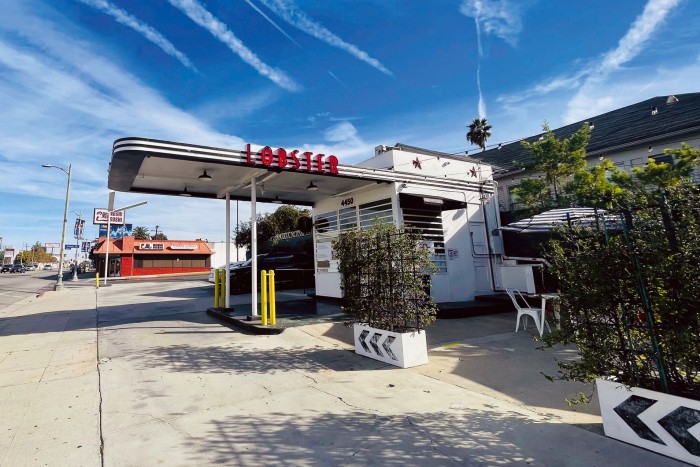
In Wellington, New Zealand, the Garage Project brewery has filled a former petrol station and repair shop with tanks and fermenters. In 2011, its founders installed a 50l system and brewed 24 different beers in 24 weeks. The station’s original canopy shields their pallets and crates from the elements, while the former sales counter has become a takeaway “Cellar Door” with eight rotating beer-tasting taps. The building has a remarkable history as the workshop of Sybil Lupp, New Zealand’s first female racing driver and a Jaguar specialist. “She was known for tearing out of the garage in an open-top Jag with a cigarette holder in hand,” says co-founder Jos Ruffell, who created the brewery’s Garagista beer in her honour. “The word was a bit of a slur to begin with,” says Ruffell. “It came from Enzo Ferrari – he was mocking the British Formula 1 teams who were making cars that were lighter, faster, and winning on shoestring budgets out of little garages in England. That really spoke to us, as a small brewery trying to create unique beers and take on the bigger breweries.”
In Oslo, Kiosk! also honours its history. The tiny coffee shop occupies a 1935 station once operated by Mobil Oil. Its tables and chairs are installed under the building’s rounded canopy, painted in pastel blues and pinks. “We used our own brand colours but we applied them as a gas company would have,” says Kari Anne Solfjeld Eid, who galvanised 65 local investors to rehabilitate the site in 2021. Illustrator Mari Kanstad Johnsen created a playful version of Mobil’s red Pegasus for its logo.
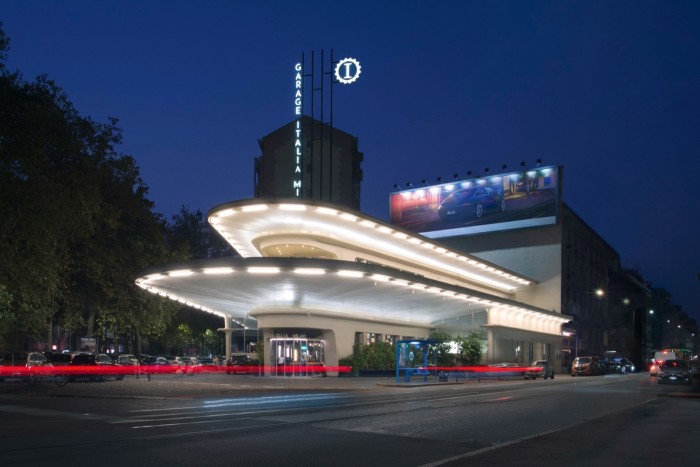
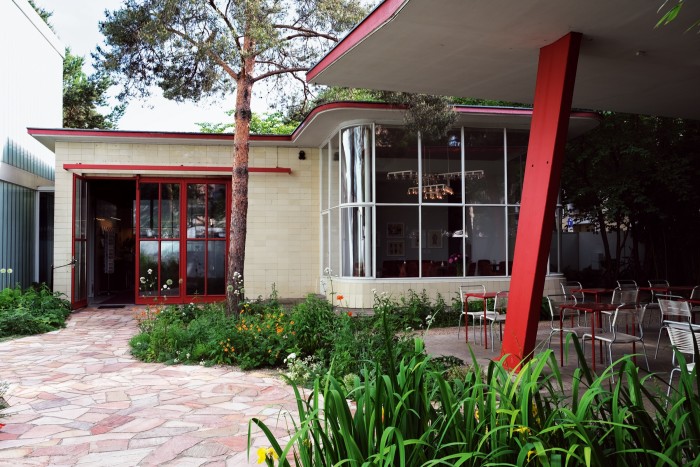
Former stations offer fun design features: “We’ve got these huge windows that you could drive a car through,” says Jack Simpson of the UK’s Hyde Park Book Club in Leeds, a literary café by day and live music venue by night. Royal Lobster in LA serves Maine-caught lobster rolls from a ’40s Texaco station, fronted by bright red signage declaring “LOBSTER”. Artist duo Craig & Karl drew on traditional petrol station branding for the public art installation Here After, which covered a derelict London station in bright stripes and arrows. Summer Camp, in Ojai, California, is a 1951 station offering homeware and bespoke framing. “The original wood roll-up mechanics’ bay doors are still around back, now serving as big, beautiful windows,” says co-founder Michael Graves. “The ‘Air and Water’ sign remains, handpainted on the front brick, plus all of the sliding metal doors, with funky hardware and vintage locking devices, as well as the original tyre rack, which now holds a vintage handmade canoe.” A few minutes down the road, a similar site has become the Light And Space yoga studio.
Vanhaute’s favourite architect is Mario Bacciocchi, whose aerodynamic Agip station in Milan, Italy, is now the Garage Italia Milano events venue, decorated with a Ferrari 250 GTO cocktail bar and clouds of Bburago toy cars. He’s also a fan of Berlin’s Das Kleine Grosz Museum, a gas station converted by gallerist Juerg Judin, which now displays the drawings of ’20s caricaturist George Grosz. Its courtyard is an inner-city oasis with a pond and pine trees. “To me, that’s the ideal,” says Vanhaute, “when the building is being kept alive and given a new purpose in the post-automobile age.”